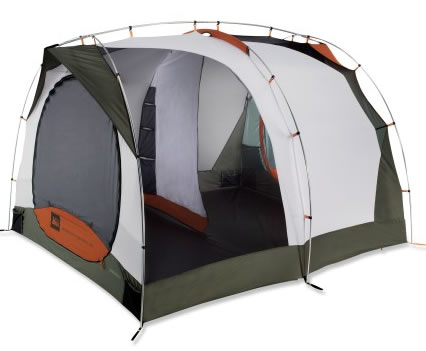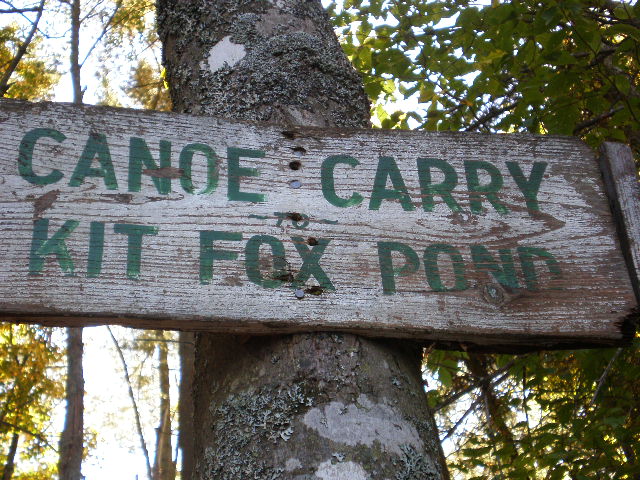 Proper camping gear can mean the difference between a great or a bad canoeing or camping trip. Important considerations when choosing your camping tent are the type of tent you choose in regard to climate, season, design and capacity.
Proper camping gear can mean the difference between a great or a bad canoeing or camping trip. Important considerations when choosing your camping tent are the type of tent you choose in regard to climate, season, design and capacity.
Three-Season Tent
For most situations the three-season tent is the best choice. Three-season tents protect in spring, summer and fall, and come with mesh ceiling panels and windows for ventilation. They also come with a rain fly that can be quickly installed to protect against downpours and wind, and hold in heat on those cold spring and fall nights. These tents are the right choice for most camping situations.
Four-Season Tent
Four season tent designs usually have additional poles into their design to increase stability in heavy wind and snow. These tents usually come in an dome tent design allowing rain and snow to roll off the tent rather than accumulate on top. Four-season tents are fine for winter and mild conditions. Their extra poles will make them heavier than the three-season tents.
Questions to Ask Yourself When Buying Your Tent.
- Do you plan to winter camp? If yes, you need a four-season tent.
- Does your camping season range from early spring to late fall? If yes, you may want to consider a four-season tent.
- Does most of your camping occur between late spring and early fall? If yes, you could use a three-season design.
Summer and Screen Tents
These tents are designed to provide shade and cover during summer outings or family camping trips. The material protects against light summer rains, and large mesh panels keep insects out while allowing a breeze. While good for summer months, these tents are not good for spring or fall use and should not be purchased as a serious camping tent.
A-Frame tents are triangular in shape, they have a horizontal pole running along the top of the tent, supported by A-Frame shaped poles on each side. The advantages of this tent design are that they are lightweight, simple to erect and fairly inexpensive. The disadvantages are that the sloping design provides lower headroom and they do not shed the elements as well as dome tents.
Dome Tents
For most camping situations the Dome Tent is the most practical type of tent. These tents erect quickly with flexible glass or aluminum tent poles that cross the top of the tent to support the fabric. The result is more room inside the tent than the A-frame tent design. The tent sidewalls are designed to shed the elements by causing moisture to run off before it can collect or soak through. The smaller variety of dome tents are ideal for backpackers and there are plenty of larger dome tents appropriate for the mobile campers like canoe campers.
Family Tents
These tents are designed to accommodate groups of campers between four and six occupants. These tents come in a variety of designs from dome tent models to frame models. Because of their extra weight they are appropriate for car camping or canoe camping situations. These family tents even come in larger models rated to occupy up to eight people.
Outfitter Tents
These tents are designed to set set up as base camp for outdoor activities or serve as a temporary cabin. Most of these tents are assembled with stakes and assembly poles. These tents are designed for comfort in extreme weather conditions, yet have enough ventilation to be fitted with a wood burning stove. These tents are great for harsh conditions but are extreme for normal camping conditions.
Tent Weight
Tent weight is a consideration when choosing your camping equipment. If you are a car camper, then tent weight isn’t such a great consideration. But if backpacking, canoeing or kayak camping is your plan, tent weight is a huge factor. And when tent shopping remember that many three -season models have doors and windows which result in additional weight. And four-season tents are normally 10% – 20% heavier than three-season tents.
Tent Size
Tent designs are available in a range from compact one person designs to large four season cabin designs that offer supreme comfort in the harshest conditions. The size of a tent is normally determined by how many people can sleep on the tent floor, but sleep capacity is usually overestimated. For example, a tent rated for 3 people can be crowded with two people and a few items of gear. So when choosing a tent keep in mind that you will not comfortably fit the number of people the tent is rated for. The layout of the floor plan can also make a difference. Some tents only provide space for the occupants, while other tents have built-in compartments for the storage of gear and clothes. A four-man tent design could easily accommodate two people and some gear.


